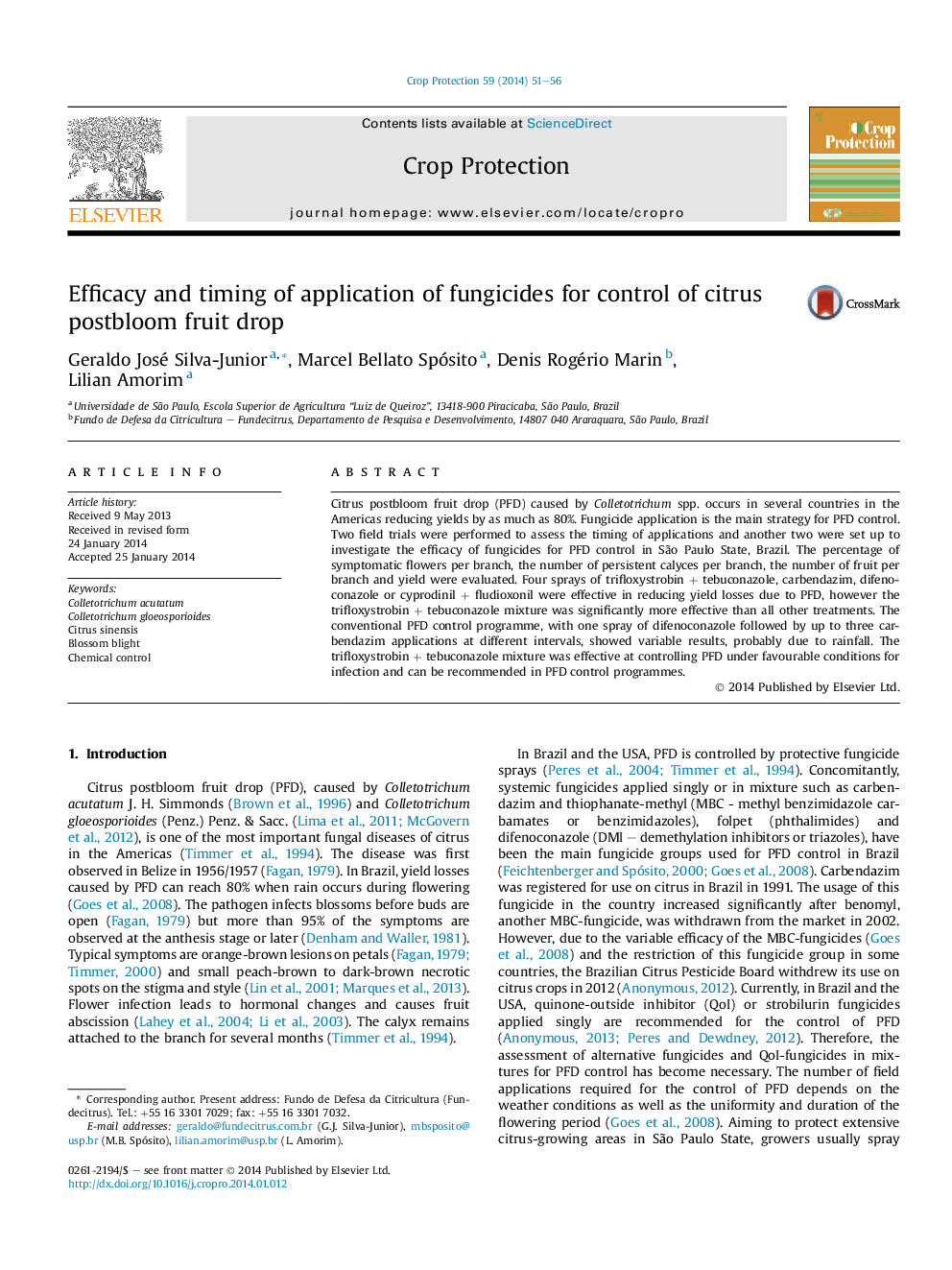| Article ID | Journal | Published Year | Pages | File Type |
|---|---|---|---|---|
| 6373740 | Crop Protection | 2014 | 6 Pages |
â¢We studied new fungicides and application intervals for postbloom fruit drop control.â¢Citrus postbloom fruit drop is controlled by a mixture of QoI + DMI fungicides.â¢The fungicide sprays by calendar is not an economic strategy for PFD control.
Citrus postbloom fruit drop (PFD) caused by Colletotrichum spp. occurs in several countries in the Americas reducing yields by as much as 80%. Fungicide application is the main strategy for PFD control. Two field trials were performed to assess the timing of applications and another two were set up to investigate the efficacy of fungicides for PFD control in São Paulo State, Brazil. The percentage of symptomatic flowers per branch, the number of persistent calyces per branch, the number of fruit per branch and yield were evaluated. Four sprays of trifloxystrobin + tebuconazole, carbendazim, difenoconazole or cyprodinil + fludioxonil were effective in reducing yield losses due to PFD, however the trifloxystrobin + tebuconazole mixture was significantly more effective than all other treatments. The conventional PFD control programme, with one spray of difenoconazole followed by up to three carbendazim applications at different intervals, showed variable results, probably due to rainfall. The trifloxystrobin + tebuconazole mixture was effective at controlling PFD under favourable conditions for infection and can be recommended in PFD control programmes.
